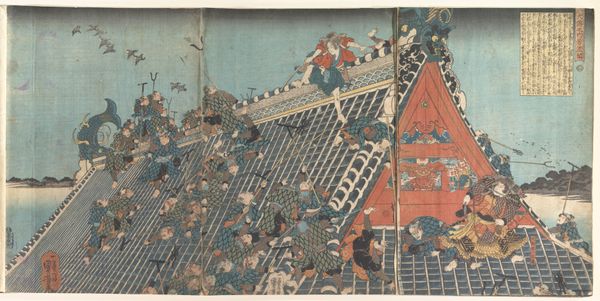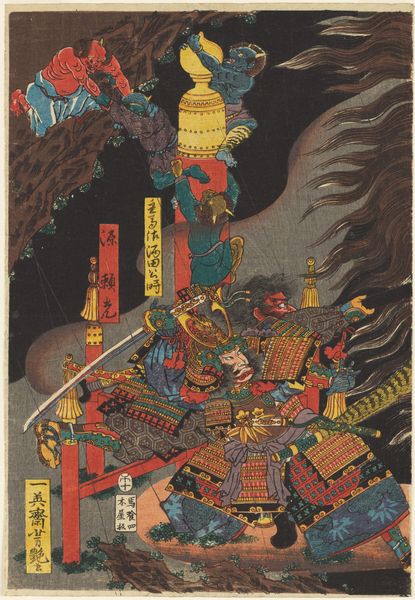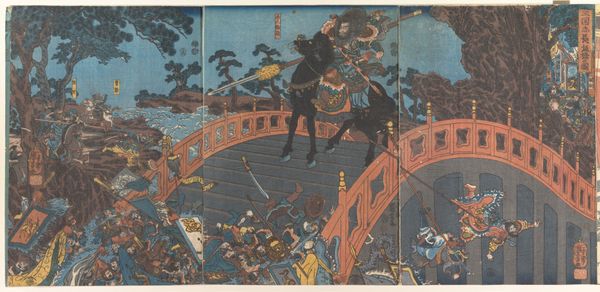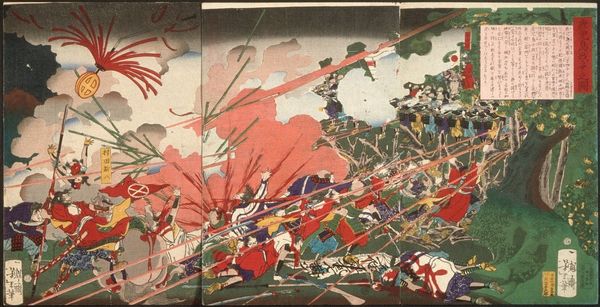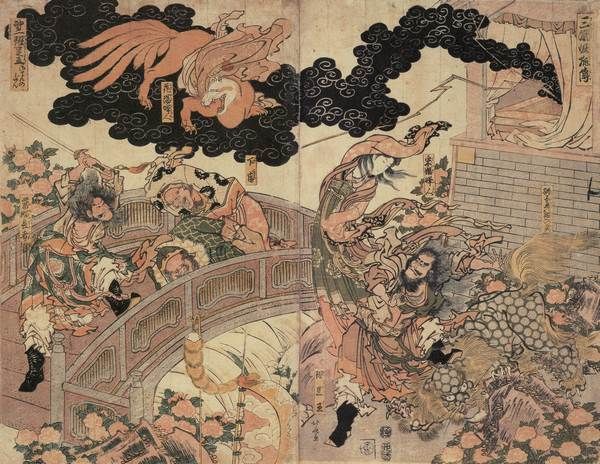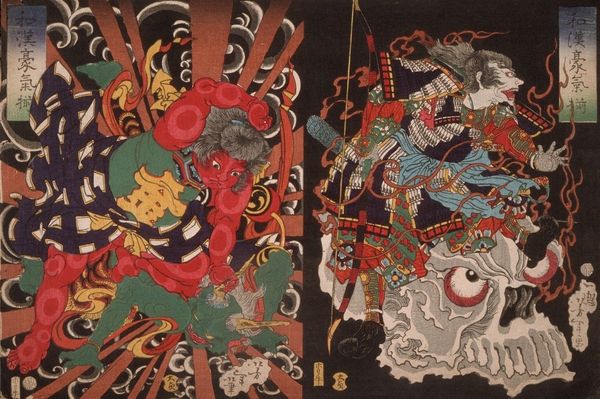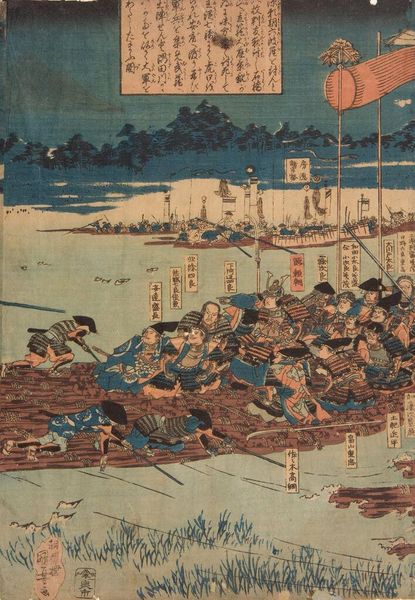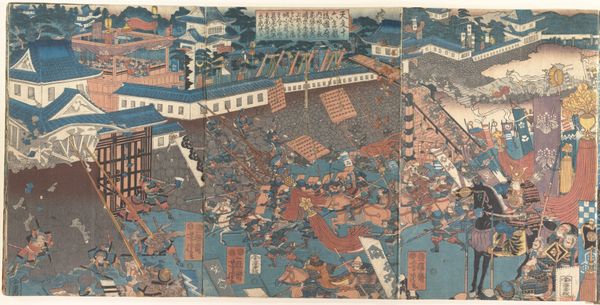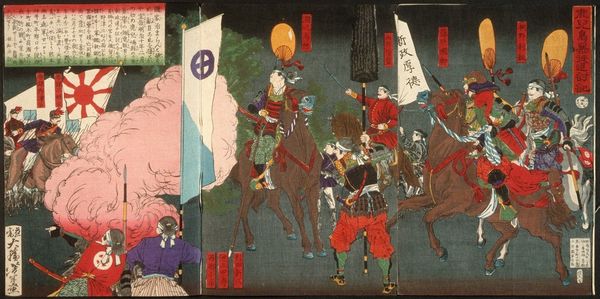
One of Fifteen Triptychs of Famous Battlescenes 19th century
0:00
0:00
print, woodblock-print
#
narrative-art
# print
#
asian-art
#
ukiyo-e
#
figuration
#
woodblock-print
#
line
#
history-painting
Dimensions: Each print: 13 15/16 × 9 7/8 in. (35.4 × 25.1 cm)
Copyright: Public Domain
Curator: Immediately striking, wouldn't you say? The frenetic energy nearly vibrates off the surface. Editor: Indeed. This is "One of Fifteen Triptychs of Famous Battlescenes" by Utagawa Kuniyoshi, a 19th-century woodblock print now housed here at the Metropolitan Museum of Art. Kuniyoshi was a master of the ukiyo-e style. Curator: The composition is remarkable, especially how the vertical lines—the banners, the palisades, the thrusting spears—create a sense of overwhelming, almost suffocating conflict. Editor: I find the persistent visual motif of the pine trees interesting. Consider how often the pine appears as a symbol of steadfastness and longevity in Japanese art, and what it may mean to position that imagery at the foreground of a violent scene from the Tokugawa era. It hints, perhaps, at the eternal recurrence of conflict. Curator: Yes, but also note how those blue-green shapes break the insistent horizontality of the architectural space, giving us visual respite amid the chaos. The limited color palette – predominantly reds, blues, and grays – lends the piece a sense of graphic severity. The linear quality is also significant; it clarifies even the smallest detail within this large melee. Editor: Consider the power of cultural memory bound into the work's symbolism. Banners display heraldry laden with family histories, shields feature iconic crests: these all spoke volumes to contemporary viewers, signaling allegiances and narratives lost to many today. It invites deeper questions about who and what we memorialize. Curator: Agreed. There is also the formal tension between the idealized representation of battle and the clear suffering visible on the faces of some figures. See how that samurai to the right, caught mid-struggle, betrays an expression more of desperation than valor. Editor: He reminds us that these glorified conflicts impacted individual lives and cultural memories, with psychological ramifications reaching far beyond any victory. Perhaps that pine tree quietly acknowledges that. Curator: Perhaps. The print, finally, exists as a powerful demonstration of the artist's ability to coalesce form and function, resulting in an image simultaneously pleasing and profoundly disquieting. Editor: Yes, a piece that encourages reflection on not only artistic excellence but how humans preserve memory across history, both visually and psychologically.
Comments
No comments
Be the first to comment and join the conversation on the ultimate creative platform.
